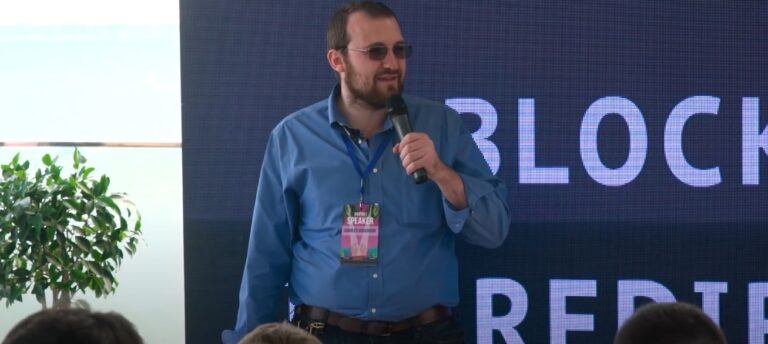The Milkomeda Foundation has announced the launch of Milkomeda C1, which “enables Ethereum dApps to be deployed in the Cardano ecosystem.”
Blockchain startup dcSpark’s novel sidechain project — named “Milkomeda” — allows EVM-compatible smart contracts to be executed from the Cardano mainnet. Furthermore, the Milkomeda project promises in future to deliver interoperability between Cardano and other layer one (“L1)”) blockchains, such as Solana.
This is how Cardano ($ADA) founder Charles Hoskison congratulated the dcSpark Team:
dcSpark was co-founded in April 2021 by Nicolas Arqueros, Sebastien Guillemot and Robert Kornacki.
CEO Nicolas Arqueros is the ex-CTO of EMURGO (which does for Cardano the equivalent of what ConsenSys does for Ethereum) and presently “serves as a Board Member at the Cardano Foundation.”
CTO Sebastien Guillemot is the former VP of Engineering & Cardano Product Manager at EMURGO.
CSO Robert Kornacki was formerly Head of Research at EMURGO.
In a blog post published on 25 August 2021, dcSpark CTO Sebastien Guillemot talked about Milkomeda, his company’s sidechain project.
The basic idea is that Milkomeda will help L1 blockchains — such as Cardano, Solana, and Polkadot — that do not yet have the same kind of “robust” developer community and the same level of mass adoption as Ethereum by providing them with “both EVM-based sidechains and novel tech that provide seamless UX for both developers and general users.”
Milkomeda aims to solve this problem by “building out sidechains with alternative VMs connected to the L1 mainchains which use their cryptocurrency as their base asset”. For instance, in the case of Cardano, what the means is that it will permit “sidechains to be deployed that connect directly to the mainchain and use wADA (wrapped ADA) as the asset to pay for transaction fees.”
Guillemot says that the dcSpark team will be “developing and deploying a novel piece of tech for the Milkomeda protocol called wrapped smart contracts.”
Here he is explaining the benefits this will bring to Cardano’s users:
“With wrapped smart contracts, the L1 blockchain becomes a robust coordination layer that users stay on while executing smart contracts on the sidechain without having to move over to the sidechain themselves.
“This brings novel UX to the table for end users, wherein for example they will have the power to execute smart contracts on an EVM sidechain straight from Cardano mainnet (likewise in any other L1 deployment) without having to switch wallets or even know what is going on behind the scenes.“
The first L1 blockchain that Milkomeda will try to help is Cardano. C1 is the name of the EVM-based sidechain that will “connect directly to Cardano”; this is not only Milkomeda’s first ever sidechain, but it is also the first sidechain to be built for Cardano.
Guillemot says that future Milkomeda sidechains will “open the doors for interoperability between Cardano, Solana, and other L1 blockchains as well.”
According to the foundation’s blog post, which was published earlier today (March 28), this project “project has been steadily in the works since mid-2021, with great contributions from multiple entities including VacuumLabs, Atix Labs, and dcSpark.“
Here are the main steps for getting started with Milkomeda C1:
- “Setup an EVM-compatible wallet” (“the go-to way to interact with Milkomeda C1 is through MetaMask”)
- “Move Your Assets Onto Milkomeda C1“
- “Start Using EVM dApps On Milkomeda C1” (a few examples of available EVM dApps are MilkySwap, OccamX, and Nomad)
Disclaimer
The views and opinions expressed by the author, or any people mentioned in this article, are for informational purposes only, and they do not constitute financial, investment, or other advice. Investing in or trading cryptoassets comes with a risk of financial loss.









